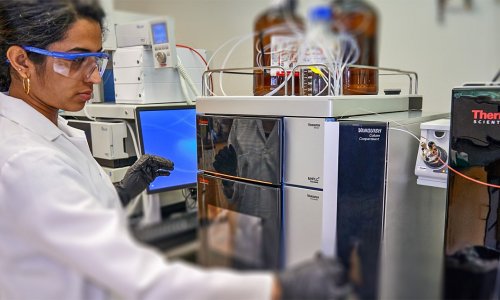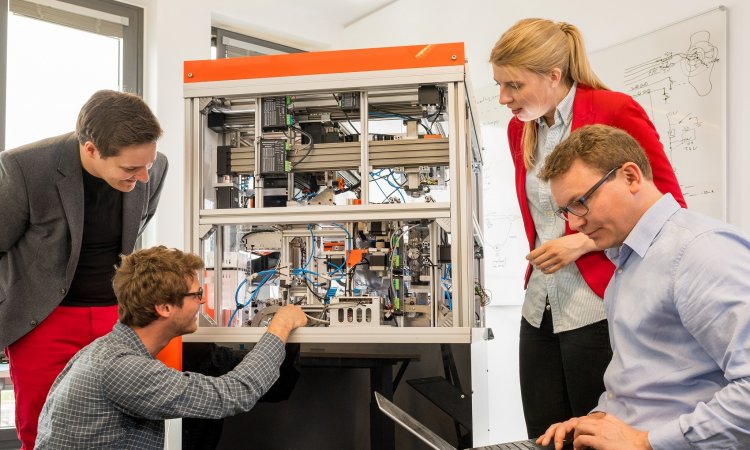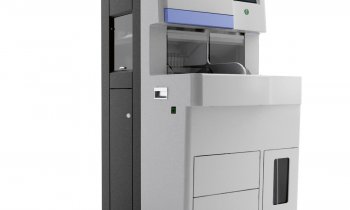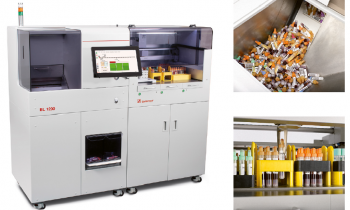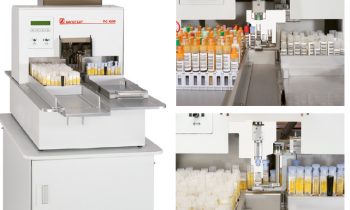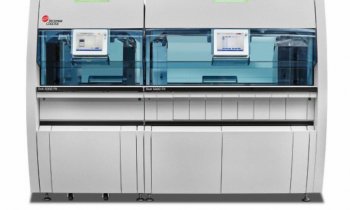AACC emphasises preventive diagnostics
San Diego, California - 20,000 international physicians, scientists and other visitors travelled to the Annual Meeting & Clinical Lab Expo of the American Association for Clinical Chemistry (AACC) in July, and 750 exhibitors emphasised the increasing importance of this gathering
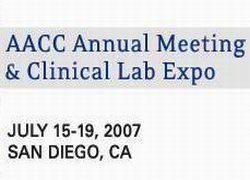
Automation
Abbott Molecular showed the m2000 system, an automated centre for sample preparation and real-time PCR: The m2000sp uses primary bar-coded tubes and precision pipetting in an open mode, thereby reducing transcription errors. It eliminates manipulation and provides flexible protocols for various samples. The m2000rt real time reader incorporates automated quality checks and calibration for accurate results, while the Windows XP based software system automatically reduces archived data. The RealTime HIV-1 assay measures levels of the HI-Virus and could be used as marker of disease prognosis and for validation of antiretroviral treatment.
Abbott Diagnostics also previewed twelve new analyzers, including five systems of the ARCHITECT pipeline. The units, which are all expected to enter the market by early 2009, offer clinical laboratories with low- to high-volumes great flexibility.
Beckman Coulter’s UniCel fa-mily of multi-platform systems is designed to be cross-functional, accommodating chemistry, immunoassay, haematology and even future components. Processing up to 200 tests per hour, the new UniCel DxI 600 is designed as the ideal full-featured solution for the mid-volume testing range. The DxI 600 is easy to use and offers more than just robust features: On-board alliquotting and refrigerated sample-storage, allowing immediate execution of reflex tests or reruns. It helps laboratories to reduce costs.
Siemens Medical Solutions Diagnostics announced the ADVIA 1800 chemistry analyzer. ADVIA series’ key features, a faster and more reliable ISE test module, and easy sample and reagent loading provide a productivity benefit. The unit could be connected to the ADVIA WorkCell or ADVIA LabCell Network Solutions without need to acquire expensive interface hardware. With a performance of up to 1800 tests per hour, or 200 Basic Metabolic panels per hour, the new system ensures that peak workloads could be handled quickly.
Tony Bihl, CEO of Siemens Medical Solutions Diagnostics, explains that his company combined in-vitro and in-vivo capability by cementing it with IT. ‘When the former Bayer Diagnostics acquired Imulite, it merged immuno assay capability to Bayer’s chemistry. That enabled Bayer to serve more and also smaller hospitals and to process 99% of all tests coming from highly automated laboratory lines. Since January 2007, as part of Siemens Medical Solutions, Siemens provides the IT which manages the immense data, builds and incorporates the rules and thereby shows not only accurate data results, but prescribes therapies that are sped off to the treating physician. The result is expedited workflow and efficiency in the lab and hospital and faster improved outcomes for patients.’
Roche’s subtle innovations support bi-directional network integration to the cobas IT1000 Point of Care Data Management Solution. Automated result entry and quality control greatly enhance Patient safety. The cobas b221 is Roche’s new multi-parameter analyser for blood gas, electrolytes, CO-oximetry and metabolites. Long-life sensors and an automated QC-System reduce maintenance to a minimum. The CoaguCheck SX system currently received FDA approval. It measures PT/INR quickly, stores 500 test results and has QC lock-out capabilities.
The Accu-Check Inform embodies Point of Care Testing abilities. It’s a hand-held system aimed for glucose testing in hospitals. Test Strips allow sampling from capillary, venous or arterial blood. The user-friendly system features enhanced electronic documentation: Internal memory stores up to 4,000 patient-specific measurements, while a user comments section is fully customisable.
Scientists presented studies and discussed clinical topics, showing that innovations really have features that could be used to improve the situation of patients.
The American College of Obstetricians and Gynaecologists (ACOG) suggested chromosomal screening to all pregnant women, regardless of age, as improved non-invasive methods allow earlier testing at low-risk. ‘Amniocentesis is still the gold standard, but it’s an invasive procedure that carries a far greater degree of risk for the pregnancy than a non-invasive screening test,’ said Jacob Canick, PhD, Women and Infant’s Hospital in Providence, RI. First trimester ultrasound and biochemcial testing, moreover integrated screening in first and second trimesters, achieve detection levels of nearly 90%.
An expert panel assembled by the Health Resources and Services Administration and the American College of Medical genetics released a nation-wide newborn screening standard, which was long overdue. The uniform condition panel for newborn disorder screening already shows great effect. ‘Testing is now being performed far more homogeneous than in the past and we are close to a full implementation across the country,’ said Piero Rinaldo, MD, PhD, expert panel member and the T. Denny Sanford Professor of Paediatrics at the Mayo Clinic in Rochester, MN. The uniform panel includes 54 conditions, thereof 42, that can be detected using tandem mass spectrometry. ‘Next we need to start talking about performance metrics – setting targets and meeting them.’
One-third of Americans are considered to be obese. Research findings from the University of Colorado’s Centre for Human Nutrition show, that adipose tissue has to be considered as a separate body organ. It produces inflammatory cytokines and fatty acids – biologically active modules that lead to development of hypertension, coronary heart disease, stroke, type 2 diabetes or other illnesses. Marc-Andre Cornier, MD, explained that traditional monitoring of plasma glucose, HDL and LDL, triglycerides and HbA1C is still important. Genetic tests could provide a more complete picture in the future, but are not available yet.
AACC is expecting to grow even bigger between now and its next event, to be held in Washington, DC from 27–31 July 2008.
31.08.2007




